The promise of perfect wireless audio – lossless and latency-free – isn’t for everyone.
The Danish company, AIAIAI, is unique in the headphone industry. Not only do they sell their headphones piecemeal, part-by-part, allowing buyers to select and assemble each interchangeable component, but they also work with and design their headphones for music professionals.
I previously reviewed the TMA-2 MOVE Wireless, a fairly basic pair of Bluetooth headphones intended for music listeners. This time around, I’m looking at the TOTL TMA-2 Studio Wireless+ headphones boasting unique technology to better serve the folks that create the music.
- Lowest latency wireless headphones
- Supports lossless CD-quality wireless transmission
- The best option for wireless studio use
- Modular design allows for repair or upgrades
- 80-hour Bluetooth battery life
- Non-fatiguing warm sound profile
- Good vocal presence
- W+ Link introduces an audibly high noise floor
- Bluetooth 5.0 implementation limited to basic SBC and AAC codecs
- No application support
- Do not fold for transport and no hard travel case is included
- No ENC or ANC
- Limited wireless range
The Wireless+ support standard Bluetooth 5.0 connections and have stellar 80 hours of battery life. What sets them apart from other wireless headphones is their W+ Link tech, which uses an included 2.4Ghz wireless (non-Bluetooth) transmitter that sends lossless and extremely low latency data to the headphones.
“W+ Link uses a dedicated radio-frequency band to send audio between the transmitter and headphones, unlike a Bluetooth connection which continuously swaps frequency bands. This ensures the 16ms latency is stable.
The W+ Link is developed with dual antennas to always secure a stable connection without interference from surroundings. With a larger bandwidth than Bluetooth, W+ Link can transmit uncompressed audio, and transmit it multiple times in parallel. This secures a stable signal without drop-outs.” – AIAIAI
The question is if this W+ Link tech works as advertised? Is it a benefit to those of us looking for the highest quality audio playback and those who make the music?
Or, is wired still better?
Company Overview
AIAIAI was founded in 2006 in Copenhagen, Denmark with the goal to develop premium products for music makers, at home, on the road, in the studio, and on stage. AIAIAI collaborates with a network of music professionals for design input.
A focus on environmental responsibility serves as the foundation of their business model, and AIAIAI uses low-impact materials, recyclable packaging, and strives for longevity and repairability to extend device functional lifetime.
AIAIAI launched its first pair of headphones in 2010.
Technical Specifications
- Form: Closed-back, Over-ear, Bluetooth
- Drivers: 40mm Bio-cellulose S05 diaphragm, high-grade Neodymium magnets
- Impedance (Ohm): 32 Ohms
- Sensitivity (dB): 97 dB @ 1mW
- Frequency Response (Hz): Not provided
- Removable Cable: Y
- Source Jack: 3.5mm
- Cup/Shell Jack: 3.5mm
- Bluetooth Audio Codec: SBC, AAC
- Battery Life (hrs): 80 hours via Bluetooth, 16 hours via 2.4GHz, 30 hours W+ transmitter
- Bluetooth Version: 5.0
- Mic: Y
- Weight (g): 278g
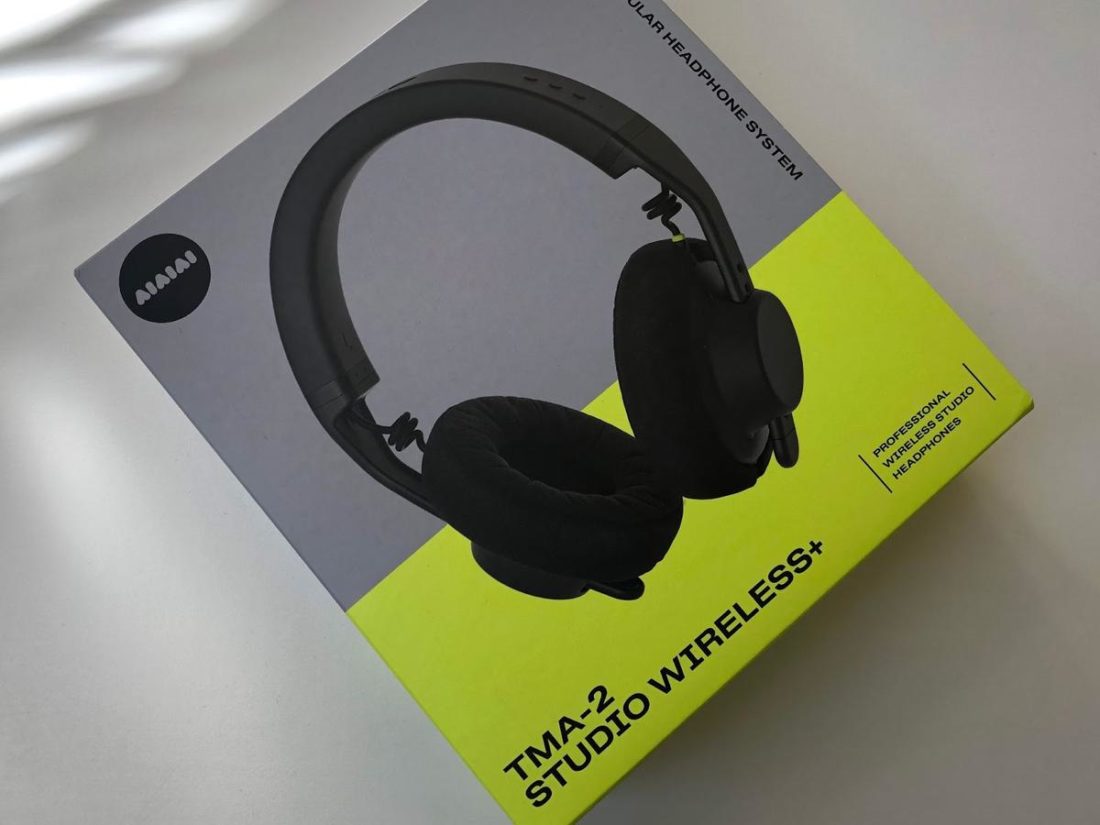
Packaging
The experience of unpacking and building the TMA-2 Studio Wireless+ is the same as with the MOVE version. All the parts are individually packaged in sealed plastic bags – ready to be assembled.
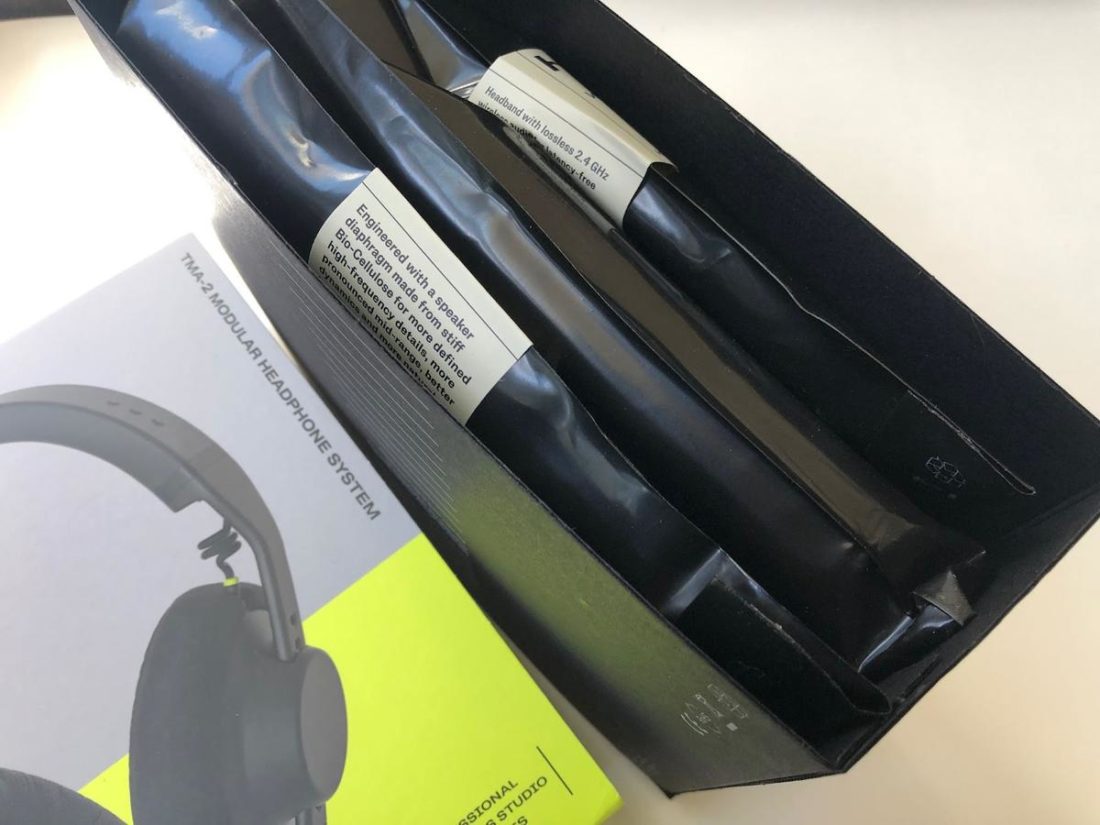
A striking neon yellow and black sleeve contains a simple black box. Inside the box, you will find the bags containing the four main headphone parts. All are clearly labeled with a white sticker showing the name, number, and picture of what’s inside.
Assembly only takes a few minutes, as all the parts fit together intuitively. The headband slides through slots in the driver cups, while the ear pads clip on with four small pegs. Plug the headband cable into each driver cup, and you are ready to go.
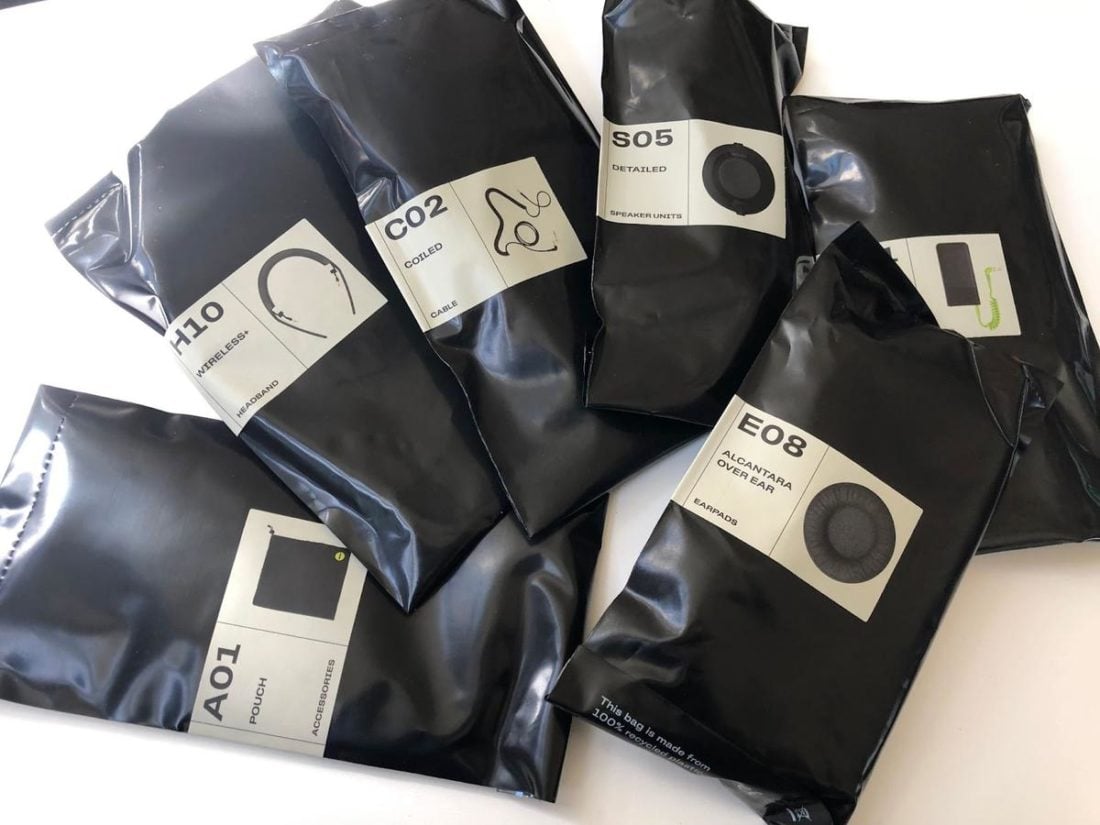
In the box
- 2x SO5MKII diaphragm units
- 2x EO8 over-ear Alcantara pads
- H10 Headband
- XO1 W+ Link Transmitter
- CO2 1.5m-3.2m black coiled cable
- 30cm yellow coiled cable
- 2x 3.5mm to 6.35mm adapter
- AO1 Protective nylon bag
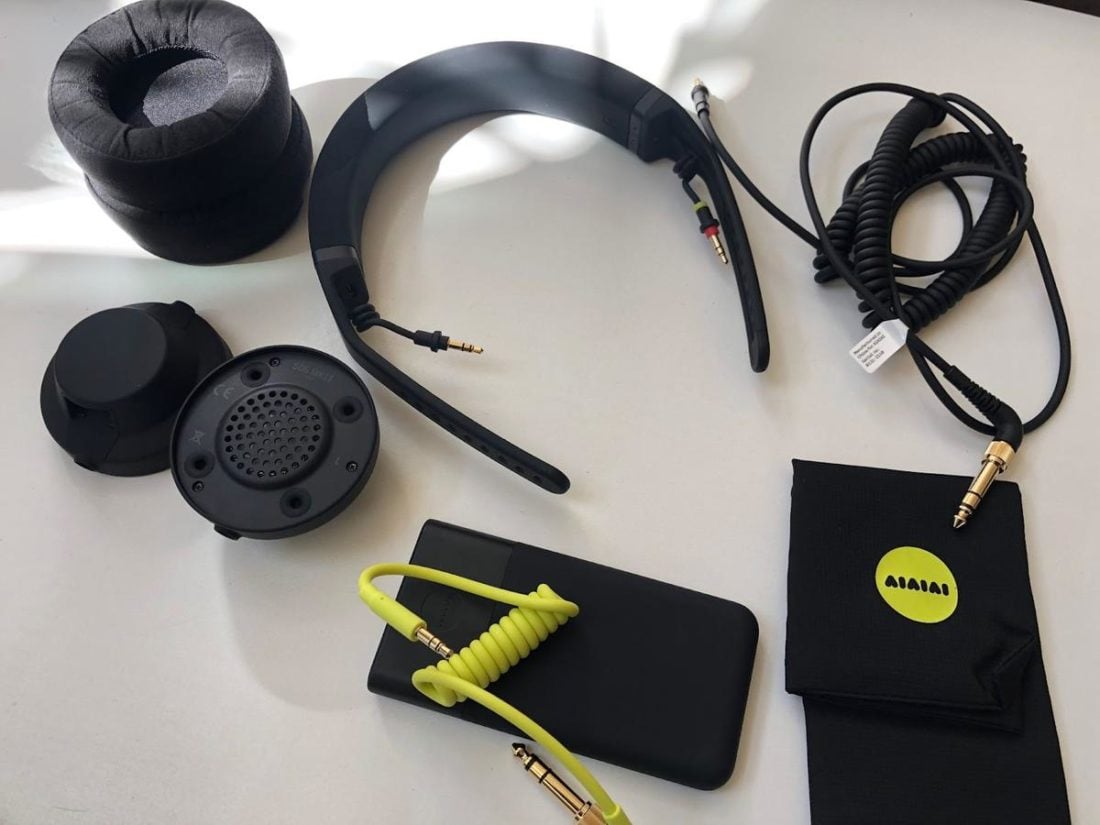
Cable
The included C02 cable is a coiled black 1.5m thermoplastic wire with a soft-touch surface. It extends up to 3.2m and is primarily intended for DJing or small studio use. The headphone end is terminated with a 3.5mm proprietary locking plug, while the source end is a standard right angle, 3.5mm TRS plug.
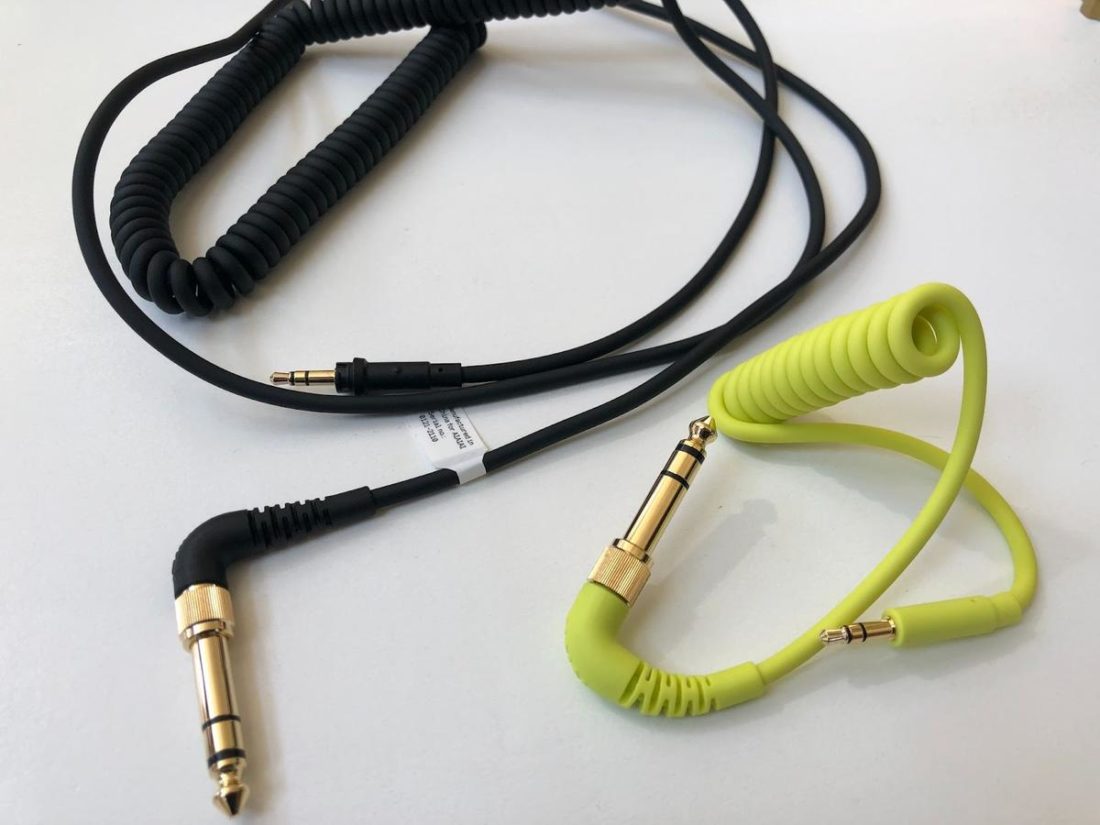
Design and Comfort
I referred to the TMA-2 MOVE Wireless as the ‘little black dress’ of the headphone world, due to their simple but classy minimalist design.
While overall very similar, this time around the Studio Wireless+ are still ‘dressed in black’ but are a touch ‘less little’, as the headband now contains the new W+ tech, rather than the wireless bits being hidden in the ear cups.
This makes for a 15mm thick rubberized band that is fairly minimally padded. It’s not too bulky looking and resembles a well-padded band. Luckily, the clamp force is adequate to keep the band from pressing down too strongly, and it remains reasonably comfortable for longer listening sessions.
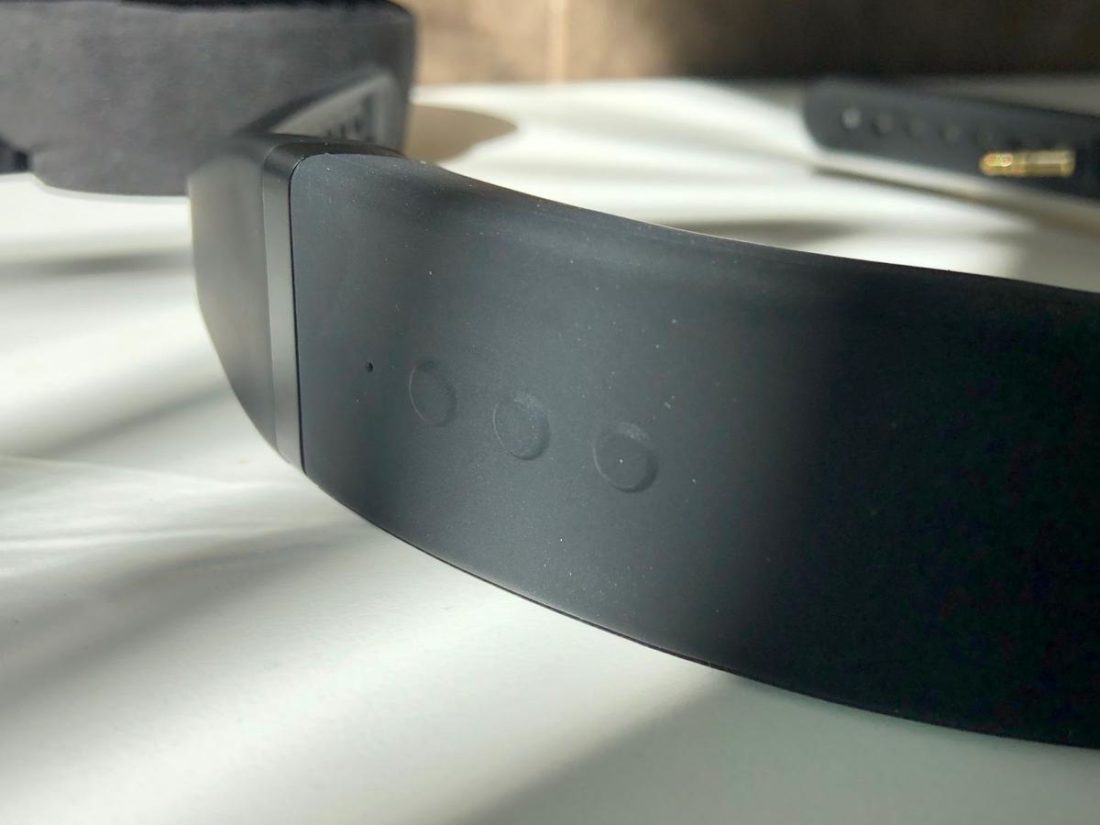
The H10 band contains all controls, indicators, and ports. There are three vertical buttons on the outer right side that protrude slightly along with a small LED below them.
On the inside of the band where it thins to connect to the cups, there is a physical switch to change between Bluetooth and W+ Link connections on the right, and the USB-c charge port on the left.
Short coiled wires protrude from the inside of the band to plug into the ear cups, and I appreciate the right wire has a discrete yellow indicator to signify the side. The plastic band pushes firmly through the cups and has nine size adjustment points per side, providing plenty of fit options.
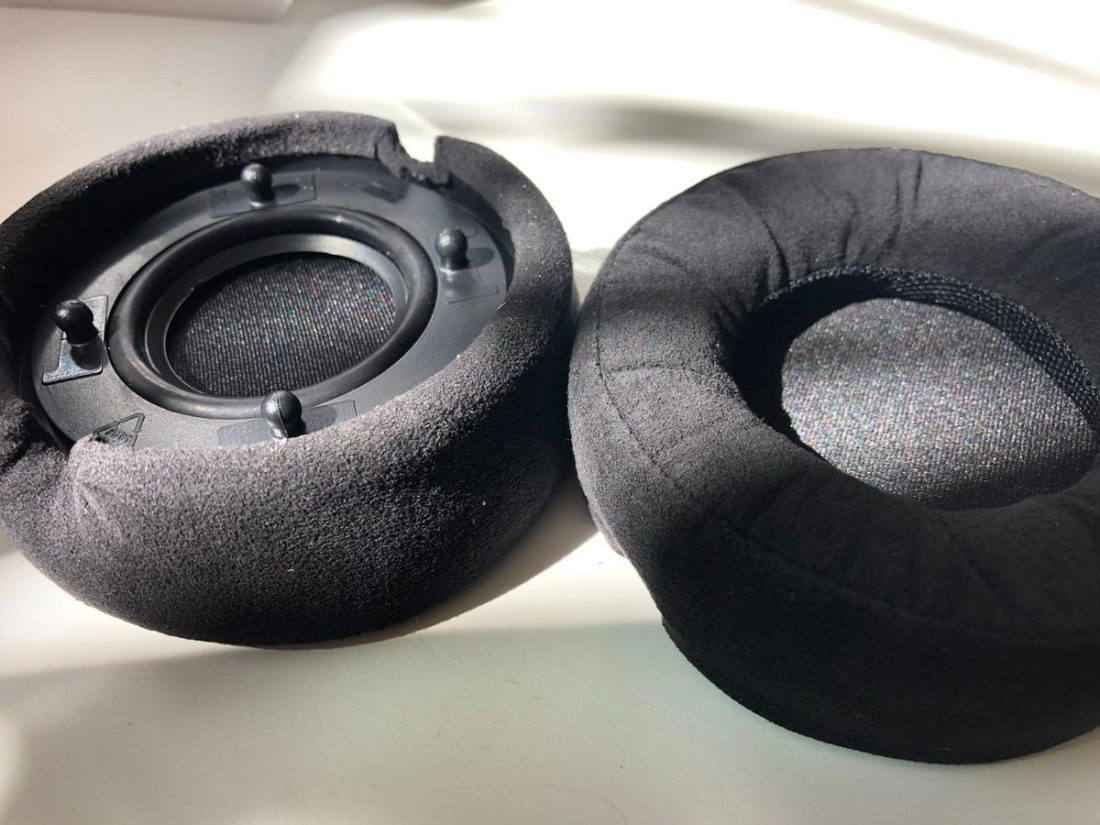
The included EO8 over-ear Alcantara pads are large, plush, and comfortable, although they warm up with extended use. The inner surface appears to be a fabric mesh material and likely is intended to tune the sound and improve breathability.
It’s all an unpretentious and ingenious design that, at first glance, doesn’t jump out. The only branding is the debossed AIAIAI name on the top of the band, and it would be easy to assume they are just another pair of inexpensive generic Bluetooth headsets.
Only upon close inspection and handling, do you become aware that the Studio Wireless+ follow the general idea that ‘simple is elegant.’
XO1 W+ Link transmitter
The X01 W+ Link transmitter is the general size and shape of a smaller smartphone or battery power bank and is covered in a soft-touch rubber coating. The top edge contains the power button, 4 indicator LEDs, a USB-C charge port, and a 3.5mm input socket.
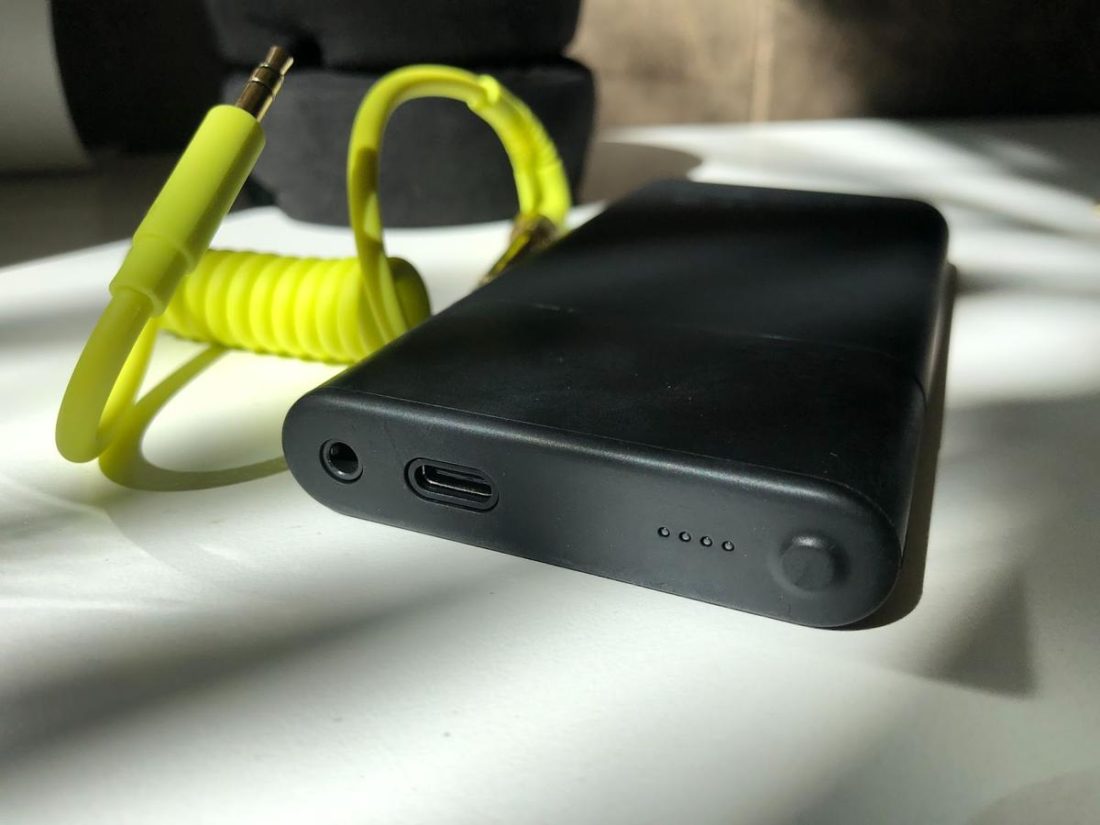
It should be noted that the X01 cannot accept a digital input. The 3.5mm analog input accepts the output from a headphone socket from another device – analog inputs are far more the norm for studio use.
The X01 comes with a 30cm, fluorescent yellow coiled cable – 3.5mm to 3.5mm plus included 6.35mm adapter. It’s visually attractive, but unfortunately, the tight coiling and light weight of the X01 means that the cable will not stay extended, and the transmitter will spring back rather than stay in place.
Internals
The heart of the Studio Wireless+ are the 40mm SO5MKII bio-cellulose diaphragm drivers. AIAIAI touts the stiffness of this organic material and claims it provides “more defined high-frequency details, more pronounced mid-range, better dynamics, and more natural tonality.” The SO5MKII is their TOTL driver unit.
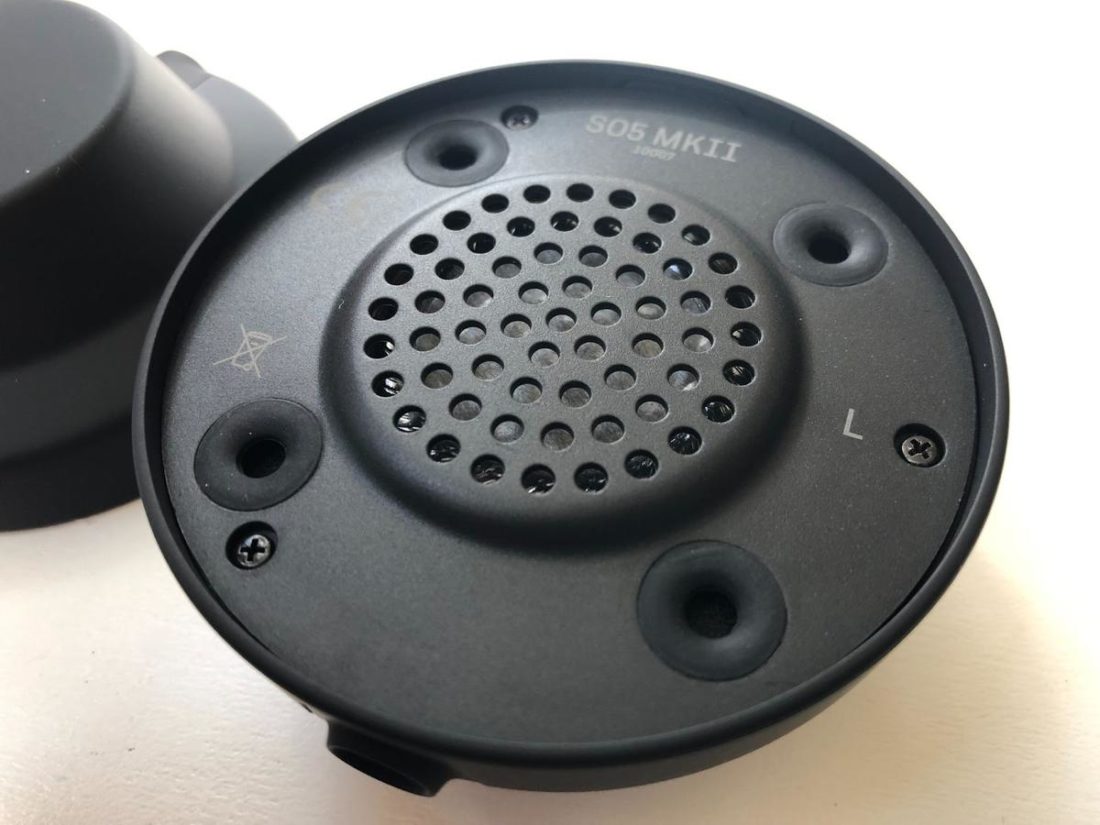
Bluetooth and W+ Link
While Bluetooth 5.0 is the industry standard, supporting only basic AAC and SBC codecs feels like a bit of a miss in today’s high-tech market.
Although, admittedly, as an iPhone user, I would only use AAC (as it’s the default Apple codec). And, of course, the Bluetooth connection is secondary to AIAIAI’s W+ Link tech, which supports “uncompressed and stable 16bit connection from larger bandwidth and dual antennas”.
While Bluetooth supports a bandwidth range from 320-990 kbps depending on the codec used (AAC and SBC are at the bottom of this range), W+ Link supports up to 1500 kbps.
Redbook CD audio (44.1kHz/16-bit) has an audio bitrate of 1,411 kbps (@16-bit), just below the 1500 kbps limit of the W+ Link.
W+ Link can support uncompressed 44.1kHz/16-bit transmission.
W+ Link latency (16ms) is also far lower than Bluetooth standards ranging from about 100ms to more than 250ms for AAC and SBC. Even aptX LL (low latency) is rated for below a maximum of 40ms.
While this is more than is necessary for most end-user media consumption, content creators will appreciate the closer to real-time performance.
Since the X01 transmitter accepts only an analog line-level input, the TMA-2 Studio Wireless+ have the potential to become the ultimate pair of TV viewing headphones and are suitable for any device with a headphone output but no Bluetooth support.
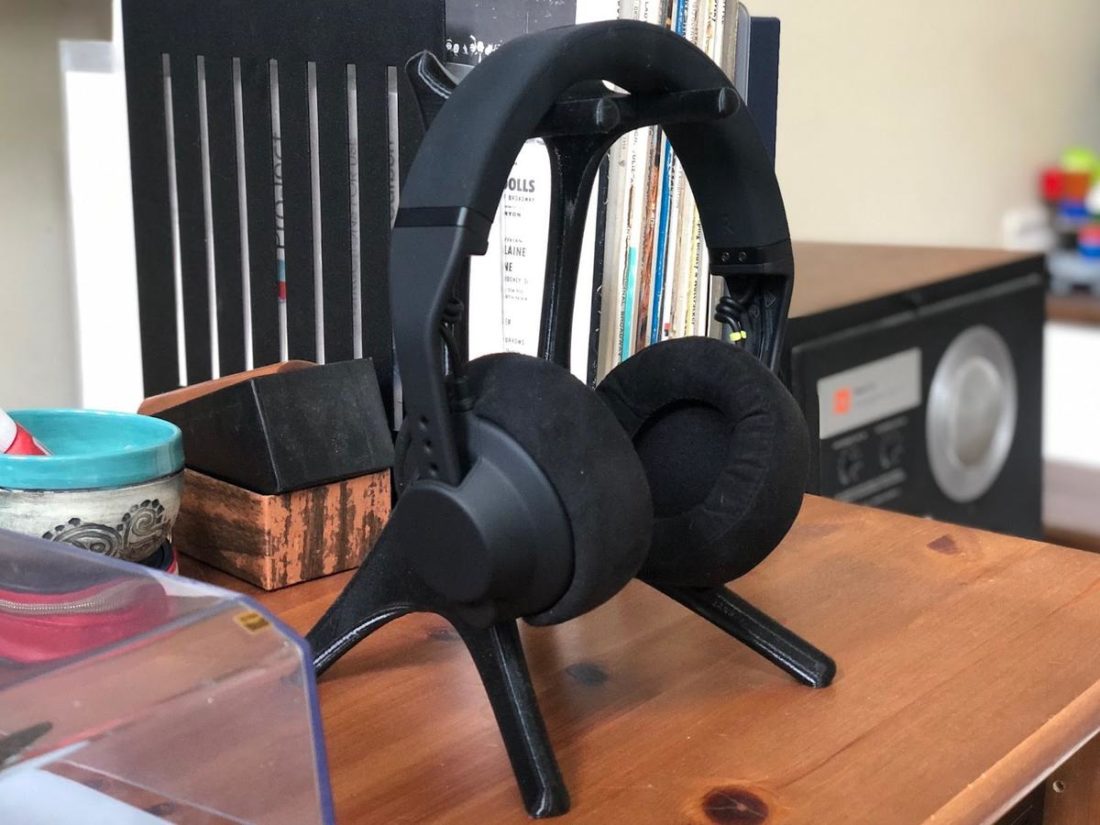
W+ Link limitations
While the battery life is an impressive 80 hours in Bluetooth mode, this drops to 16 hours in W+ Link mode. Additionally, the X01 transmitter must be recharged every 30 hours.
Another benefit of Bluetooth is the ability to control the source device, play, pause, skip, etc. W+ Link is audio transmission only. The onboard microphone is also disabled using the W+ Link.
Wireless connection distance for both Bluetooth and the W+ Link is also notably less than with other Bluetooth headsets I’ve tried. It all works fine in the same room as the transmitting device. However, moving from the room causes more dropouts than I’m used to.
Finally, there is a potential deal-breaker for those who are hoping the improved data transmission of the W+ Link offers the listener a truly substantial upgrade over Bluetooth. There is a noticeable noise floor, resulting in a constant low-level hiss, using the W+ Link that is not present when listening via Bluetooth.
This can be mitigated by turning the source device volume up to the maximum (or the highest level that does not cause audible distortion) and reducing the headphone volume – thus improving signal-to-noise and reducing the hiss. Still, it is never truly inaudible in silent sections within or between songs.
It also may not be possible to achieve the desired listening volume while maintaining a low level of background noise.
This hiss makes the W+ Link tech a trade-off, weighted towards content creators rather than music listeners. Those who require or value ultra-low latency are more likely to overlook this shortcoming. But for the average listener, given today’s proliferation of high-resolution digital files, an audible noise floor seems like a step back.
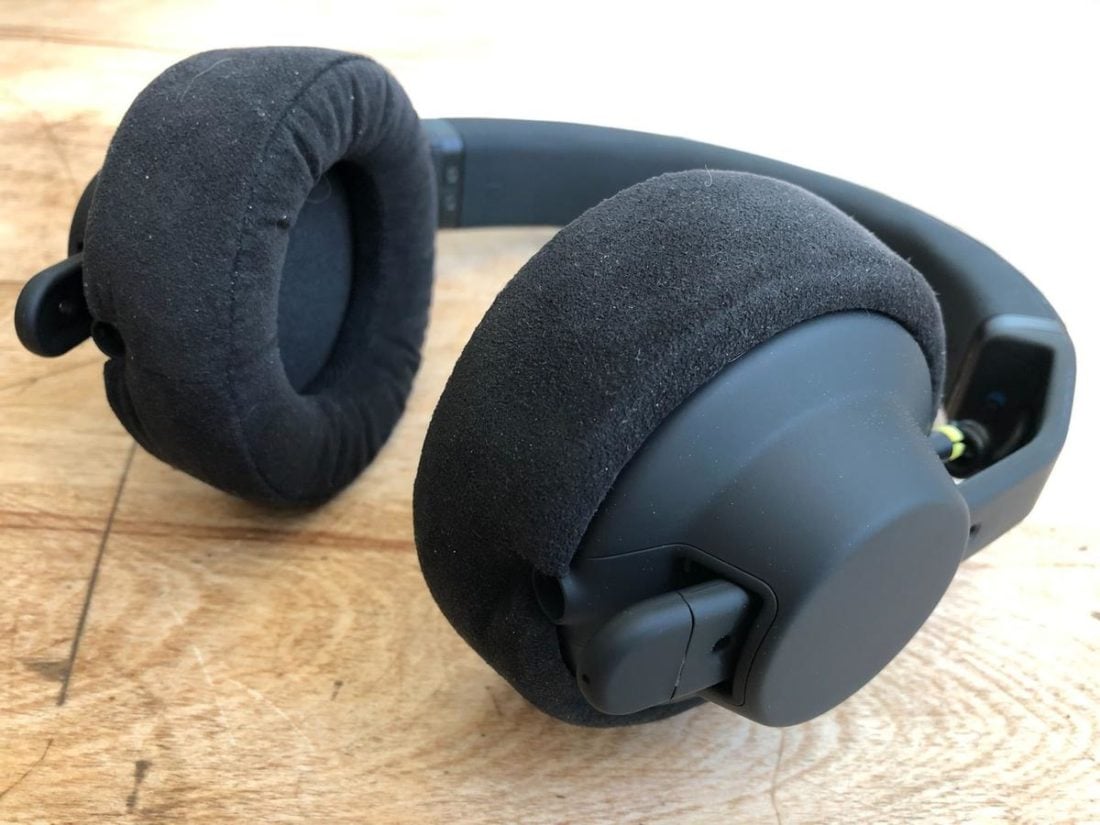
TMA-2 Studio Wireless+ Sound
AIAIAI describes the S05MKII as “detailed sound (midrange focus)” and combined with the Alcantara pads, the Studio Wireless+ are on the warm side of truly neutral sounding, with fairly rolled-off high-treble and sub-bass.
They aren’t just another pair of bass-boosted, v-shaped consumer cans.
While I don’t consider the tuning to be truly neutral, they are reasonably balanced and clear. Most at home with modern pop or electronic music, the design partnership with a DJ and EDM musician, may be inferred from the sound signature of the Studio Wireless+. Although, there is less sub-bass than I would expect from a solely EDM-focused tuning.
The Studio Wireless+ are rich and full without being too in-your-face or shouty. The sound isn’t of the flat nature I expect when I hear the term ‘studio monitor’ or headphones intended for studio use and they’re very enjoyable for non-critical listening.
I definitely think that the mention that this is a PLAYER monitoring can, not so much an ENGINEERING can might be a really pertinent addition. They couldn’t be more different needs – and I think the audiophile community misses this point a LOT.
You don’t want or NEED perfection in a player can – you need the groove to be there to follow, and you want enough of yourself to know what’s going on.
But not so much detail that you obsess, and definitely not too much to burn your ears out (hence the giant 3k earbuzz omission, and my personal ‘hate zone’, which is a known quantity at this point :D).
Note that there is no environmental or active noise cancellation (ENC or ANC) and the Alcantara pads allow a certain amount of external sound to penetrate, so the Studio Wireless+ aren’t trying to compete in the travel or commuting wireless headphone category.
Audible differences between connection methods are pretty subtle, barring the noise floor caused by the W+ Link. In back and forth comparison using high-quality lossless 44.1 kHz/16-bit files, the extremes seem to push further with the cable or W+ Link connections, with slightly deeper sub-bass performance and somewhat airier high-end. YMMV.
Even with the basic AAC Bluetooth connection, the sound quality is very good.
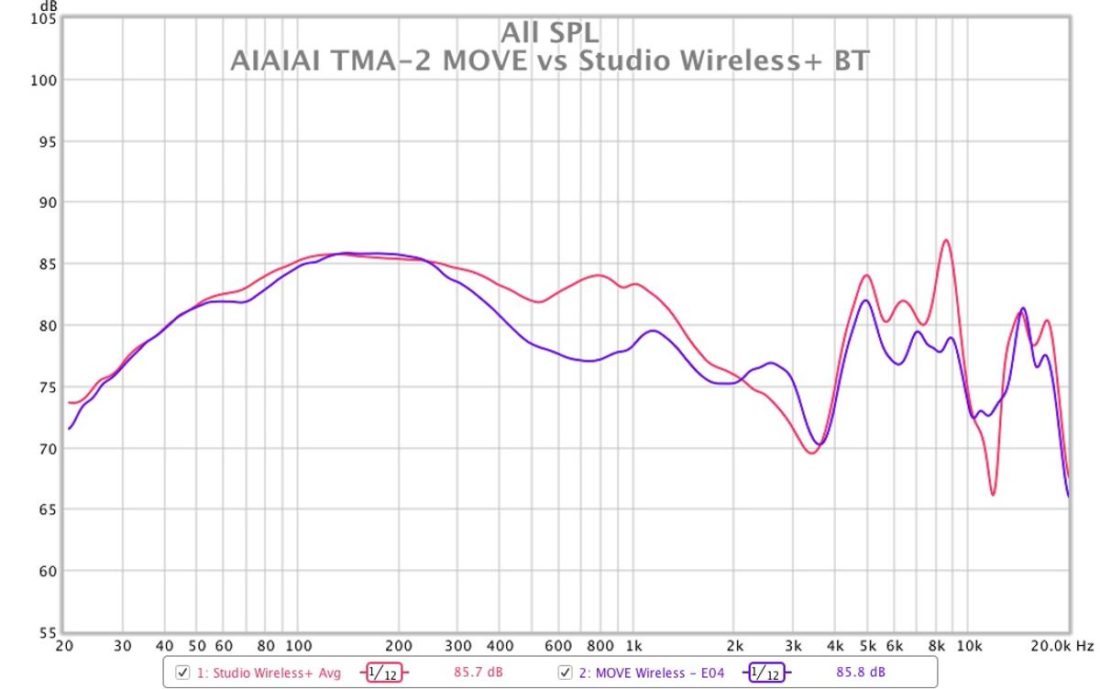
Bass
The bass is tuned with a mid-bass focus that doesn’t overwhelm the other higher frequencies, ensuring a decent amount of detail in the presentation.
There is added warmth to the overall sound, and coupled with polite upper frequencies, the Studio Wireless+ don’t come across as fine-grained resolution monsters. They feel more like headphones intended to just forget and lose yourself in the music.
Boom. Heart of it all: player monitoring cans!
Bass remains present and controlled without becoming too forward in the mix. For those that prefer a somewhat laid-back and darker tone, the Studio Wireless+ are extremely enjoyable to listen to.
Midrange
The midrange extends from the bass smoothly, with a warmth and solidity built on the more prominent low-end. Voices especially seem to benefit from this tuning, and both male and female vocals have a good presence and heft.
Like the bass region, the midrange seems dialed just above neutral, which yields a balance between easy listening and detailed presentation. As the frequencies rise, the forwardness seems to recede, avoiding any sort of shoutiness or harshness to the upper midrange.
Treble
The Studio Wireless+ have a polite high-end, although they don’t seem unduly rolled-off. There is a more flat-sounding response, lacking overt energy or sizzle. Again, this isn’t entirely at the expense of detail or resolution, and if the mid-bass was dialed back a bit, they would seem quite neutral.
After listening to the TMA-2 MOVE Wireless and Studio Wireless+, I’m interpreting this as somewhat of a ‘house sound’ for the brand. A gradual slope downwards from the more prominent mid-bass with a little treble uptick to balance things out.
Yeah man. I think this is the old euro standard of speaker tuning. 1db per octave drop from about 80 up, IIRC.
Where to Buy
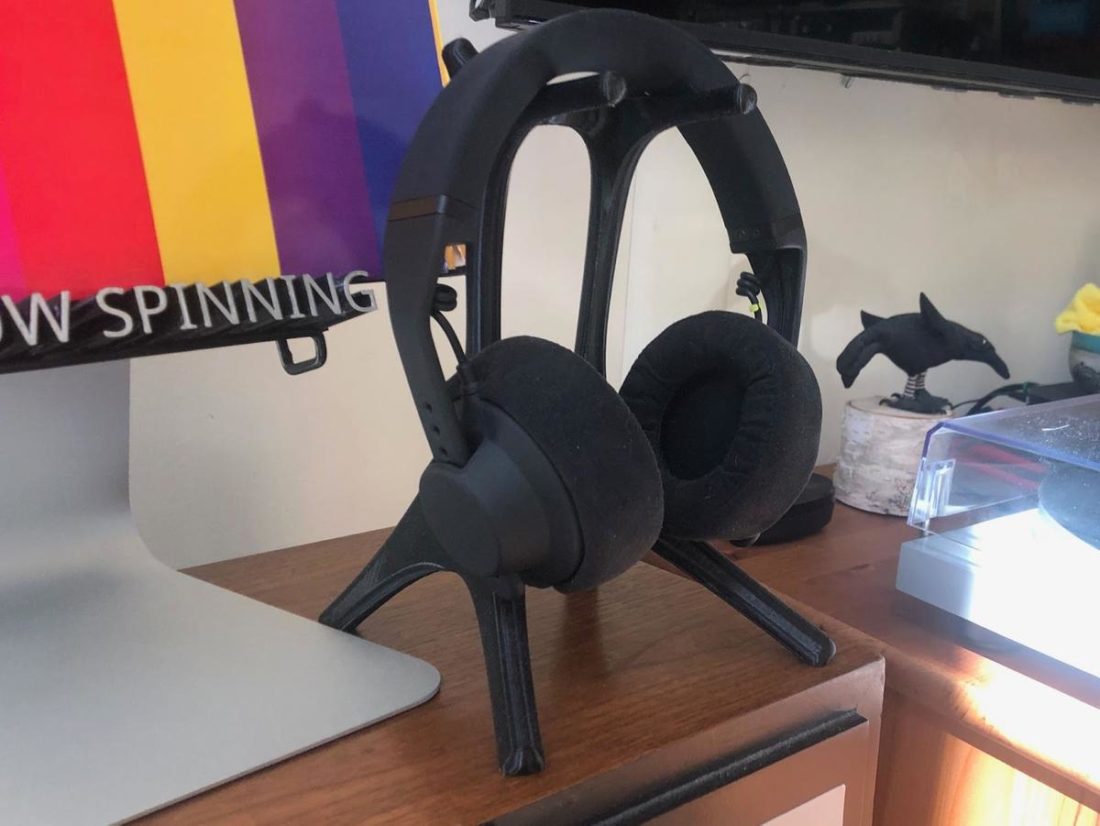
Conclusion
I like the AIAIAI business model and the concept of modular headphones. I see it as a win for the consumer and environment, allowing the purchaser to upgrade or repair as desired rather than simply replacing the whole pair of headphones.
I also greatly appreciate the practical and elegant design and implementation inherent to AIAIAI’s products.
The TMA-2 Studio Wireless+ are specialty headphones built for a purpose, and they excel when used as intended. If you are looking for a traditional generalist pair of Bluetooth headphones, there are likely better options to suit.
Need ANC or ENC for commuting or travel? Look elsewhere – other headphones in this price bracket offer these features. Just want a pair of good-sounding, attractive, and well-made wireless headphones? The little brother TMA-2 MOVE Wireless offer much of this functionality and sound for less cost.
However, to fairly judge the Studio Wireless+, one must consider their tuning and what the unique W+ Link brings to the table.
Regarding sound quality improvement, the ability to support lossless CD-quality wireless transmission is fairly moot, as even the lowly AAC Bluetooth sounds quite good these days, and headphones that support higher resolution codecs such as LDAC are becoming common. Not to mention, the elevated noise floor introduced by the W+ Link is undeniably a sonic trade-off.
However, for content creators, the near-instantaneous 16ms latency connection may be exactly what you are looking for. Of course, simply using a wired headphone entirely negates this, but it may well be that the combination of ultra-low latency with wireless is the permutation you need in your studio.
This I can confirm. I get about 2.5 ms of latency off my DAW. 16ms is WAAAY better than 100ms or more, which would utterly destroy timing unless you’re shooting for Billie Holiday feel.
